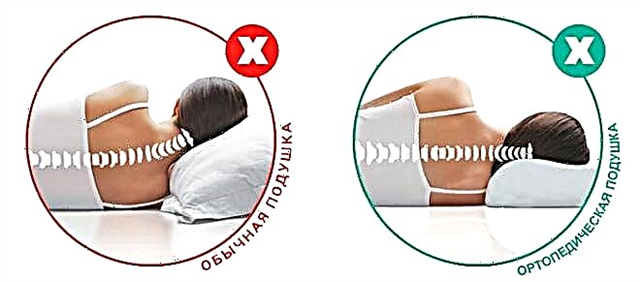Solvent 647 is one of the most popular, along with solvent 646. It is produced by many chemical enterprises and is well known to consumers. Excellent consumer properties determined the breadth of application and popularity of this solvent.
Solvent 647 is a mixture of volatile organic substances: aromatic hydrocarbons, ketones, alcohols and ethers. The chemical composition of solvent 647 is close to that of solvent 646 and includes toluene (41.3%), butyl acetate (29.8%), ethyl acetate (21.2%), butanol (7.7%). Solvent 646 also contains components such as acetone and ethyl cellosolve and is considered more aggressive, which is why the use of solvent 647 is advisable where a careful attitude to the surface being cleaned, for example, is important.
Solvent 647 is used to remove varnishes and coatings, to dissolve nitrocellulose film formers. He found wide application as a solvent for bodywork, as it is suitable for diluting nitro enamels and nitro-varnishes used in car painting.
This solvent is designed to dissolve nitrocellulose-based paints and varnishes. Solvent 647 is ideal for diluting and dissolving the following types of enamels: NTs-280, NTs-11, NTs-132P, AK-194, as well as NTs-097 primer.
Our company sells chemical products, solvents are widely represented in our catalog. We sell 646 solvent, solvent 647, solvent 650 and others. You have the opportunity to order chemical products in various containers: cans, bottles and barrels. We deliver by road. We cooperate with the largest chemical manufacturers in Russia and supply quality products in any quantities. You can contact us by phone or using the feedback form in the "Contact Us" section. We look forward to working with you.
Description
Today, solvent 647 is on the list of the most popular and common formulations. Its peculiarity lies in the fact that ethylcellosolve and acetone are absent in the composition. Due to this, the solution is considered more gentle and it can be used when cleaning plastic surfaces. P-647 is chosen when, in the first place, a careful attitude to the surface to be treated.
The solvent is often used when painting automobile vehicles, since it can be used together with nitro-varnishes and nitro enamel. The product can be found in almost any store specialized in repair and construction.

When using a solvent together with nitro enamel, the formed film should not acquire white color upon evaporation of the composition. All minor defects, such as scratches, strokes on the surface of the enamel are smoothed and smoothed effortlessly.
Specifications
Solvent 647 has the following technical characteristics, which are confirmed by the relevant resolution of GOST 18188-72:
- appearance - a transparent composition, which may have a slight yellowish tint,
- texture - homogeneous (lack of suspension),
- water - the maximum rate of 0.6%,
- volatility (ethyl ether) - from 8 to 12,
- coagulation - at least 60%,

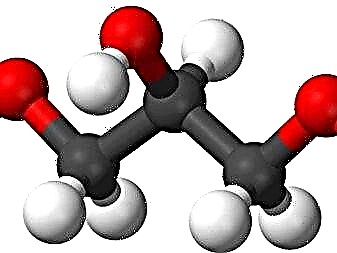
- density - 0.87 grams per cubic centimeter,
- the maximum acid number is 0.06 mg KOH per gram,
- density - 30.87 g / cm³,
- flammable liquid
- the storage period of the solution is exactly one year from the date of manufacture,
- spontaneous combustion occurs at a temperature of +424 degrees Celsius, flash - 5 degrees Celsius.

Using
In addition to its intended purpose, the product 647 is used to increase the viscosity of materials containing nitrocellulose. Compared to a similar solvent labeled 646, it is less active and therefore does not damage plastic surfaces. It can be safely used for gentle cleansing of the bases from varnish and enamel. If necessary, the solution is added to various paints and varnishes. In the process, the fluid must be constantly and thoroughly mixed for uniform distribution.
Proportions are determined according to the instructions. They differ depending on the composition of the paint or enamel.


Storage
Before using solvent 647, you should definitely familiarize yourself with the basic rules of operation and storage.
- The composition must be stored in tightly closed packaging. Direct sunlight should not fall on the packaging. The room must have a high level of fire safety. Keep solvent out of the reach of children and animals. An ideal location is a dark and dry room in which room temperature is maintained.
- When using, it is necessary to ventilate the room. If there are no windows, and ventilation does not cope with the volatility of the solvent, you need to install fans in the room.
- Product packaging must contain instructions for using the product.
- Solvent 647 is sold for both industrial and domestic use. The choice of buyers presented packaging in the amount of from 0.5 to 10 liters, as well as large steel barrels for bulk purchases.
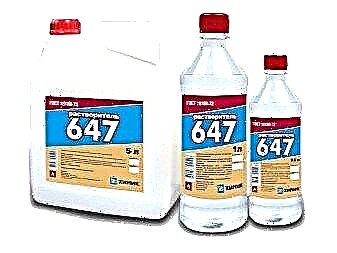
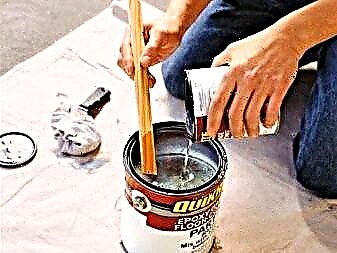
Work
Solvent 647 is a flammable liquid. Product R-647 belongs to the 3.1 class of flammable liquids. In the process, sparks, smoking and an open flame should be avoided. Air mixtures and vapors are also explosive. Air pollution by solvent vapors will pass quickly at a room temperature of 20 degrees Celsius above zero. When spraying solvent, air pollution is even faster.
Experts say that In case of careless handling, the composition may catch fire at a distance. The accumulation of volatile substances is heavier than air, due to this they spread along the ground. Interaction with effective oxidizing agents (hydrogen peroxide, acetic and nitric acid) can cause explosive peroxide. Despite the fact that the solvent of the above brand can be used to clean plastic surfaces, the substance is aggressive in relation to its individual varieties.
The composition enters into a hazardous reaction with bromoform and chloroform with the possibility of fire or explosion.
Basic security measures
The use of solvent provides for strict observance of the relevant sanitary standards and safety rules. All such formulations available on store shelves irritate the eyes, skin and respiratory tract.
If you do not provide thorough ventilation, the solvent will cause a strong cough, and such negative consequences are possible:
- loss of creation
- headaches,
- dizziness,
- clouding of reason:

- food poisoning,
- intoxication,
- weakness,
- irritation,
- nausea.
Special work clothes and accessories will help protect yourself from the above and other negative consequences. Do not do without protective glasses, gloves and masks that will prevent the ingress of toxic substances into the respiratory organs.
The solvent can even affect bone marrow and blood. If solvent gets on exposed skin, rinse the affected area immediately with soap or other foaming compound. Otherwise, direct contact can cause dermatitis.

The vapor generated by volatile constituents in the composition strongly irritates the airways and eyes. Potential poisoning due to improper handling and neglect of safety rules.
Certain elements have a negative effect on the internal organs (stomach, intestines, liver) and the nervous system. Solvent components enter the body through the skin or by inhalation.
Packing and transportation
Solvents are sold in packages of metal or glass. Transportation of products is carried out using special automobile transport. For the transportation of industrial volumes of goods, railway tanks are used.
Due to the increased fire hazard and flammability, special transport measures are necessary. The container used to transport the solvent should fully protect the solution from moisture and direct sunlight.

The differences of the compositions 646 and 647
To make the right choice among solvent formulations, you need to know the product specifications exactly. The leaders in popularity now are solvents with the marking 646 and 647. The main difference between the above solvents is the composition. In the manufacture of 646, manufacturers use acetone and ethyl cellosolve, which are not found in the P-647 solution.
Acetone makes the composition more aggressive, and therefore brand 646 is not chosen when treating delicate surfaces. This is a highly active composition that must be carefully used so as not to damage the paint layer. The components in both solvents are toluene and butanol.
See the next video for the difference between solvent and diluent.
1. BRANDS AND TECHNICAL REQUIREMENTS
1.1. Brands of solvents, their purpose and OKP codes must correspond to those indicated in table. 1.
23 1913 0200 09
For the dilution of nitroenamels, nitro-varnishes and special fillers
23 1913 0300 06
For dilution of nitroenamels, nitro-varnishes and general-purpose nitro-fillers
23 1913 0400 03
For dilution of nitro enamels and nitrovarnishes for cars
23 1913 0500 00
For smoothing strokes and scratches by spraying nitro enamel coatings after grinding
(Amended wording, Amendment No. 4).
1.2. According to physico-chemical indicators, solvents must comply with the requirements and standards specified in table. 2.
Solvents of grades 645, 646, 647 and 648 must be manufactured in accordance with the requirements of this standard according to the recipe and technological regulations, approved in the prescribed manner.
Solvents must comply with the requirements of GOST 31089 and this standard and be made according to the recipe and technological regulations, approved in the prescribed manner.
(Amended edition. Amendment No. 7)
1. Color and appearance
Colorless or slightly yellowish homogeneous transparent liquid without turbidity, delamination and suspended particles
2. Mass fraction of water according to Fisher,%, no more
3. Ethyl ether volatility
4. Acid number, mg KOH / g, not more than
According to GOST 23955 and paragraph of this standard
5. The number of coagulation,%, not less
6. Diluting action
Coagulation and delamination of coatings should not be observed.
After drying, there should be no whitening of the film on the surface, as well as whitish or dull spots
7. Solvent action
After drying, there should be no whitening of the film on the surface, strokes and scratches from grinding should be smoothed
8. Flash point in a closed crucible, ° С, not lower
(Amended edition, Amendment No. 3, 4, 5, 6, Amendment No. 7).
What is the difference between solvents 646 and 647
Solvents 646 and 647 are actively used in various types of work related to paints and varnishes. They have excellent quality and excellently cope with the tasks assigned to them. As for the price, it is also not much different. Therefore, the question arises, what is the difference between these two solvents? First, let's deal with the properties and purpose of each of them.
Solvent 646 is a colorless liquid with a characteristic pungent odor. This solvent consists of the following components. Toluene - 50%, ethanol - 15%, butanol 10%, acetone - 7%, ethyl cellosolve - 8%, amyl or butyl acetate - 10%. It is used to dilute epoxy and glyphthal primers, enamels, varnishes, and also nitro enamels. Solvent 646, which can be bought at any store of building materials, is also suitable for soluble film formers: epoxy, organosilicon, urea-formaldehyde, cellulose nitrate and others.
After drying, the smell evaporates and a smooth film is formed on the surface to be treated, which has an additional shine. It should be noted that during the work with this solvent it is necessary to be very careful, since this composition is the strongest. For example, if you need to remove the top coat, wash it very carefully so as not to touch the bottom coat. Or in such situations, you need to use weak mixtures.
As for solvent 647, it is a solution of volatile organic components: alcohols, aromatic hydrocarbons, ketones and ethers. Its chemical composition is very similar to 646 solvent and includes the following components: butanol - 7.7%, ethyl acetate 21.2%, butyl acetate - 29.8%, and of course toluene - 41.3%. But solvent 647 in its composition still has not only ethyl cellosolve, but also acetone. Therefore, it is considered more aggressive, and its use is advisable where a careful attitude to the surface being cleaned is not taken into account - it will erase any paint.
Solvent 647 is used to remove various coatings, as well as to dissolve nitrocellulose film formers. It is suitable for diluting nitro-lacquers and nitro enamels for car coatings; therefore, it has found wide application in this area.
In conclusion, we can say that solvents 646 and 647 differ in their composition and percentage of components. It can also be noted that the solvent 647 is more aggressive, which makes it an excellent assistant in the case of super-heavy work.
Features
Solvents include rapidly evaporating reagent mixtures consisting of several active components. They dissolve organic substances and form homogeneous compositions with them.
The main task of the solvent is to dilute the paint and varnish products, giving them the required working consistency, therefore certain requirements are imposed on them:
- the absence of any reaction with paints and varnishes,
- high evaporation rate
- the composition must be non-hygroscopic,
- the interaction of the solvent and the coloring composition should occur without any effort.
The solvent affects the paint only at the time of application, after which it evaporates without a trace. Each paint product has a specific type of solvent.
Solvent number 646 is a universal composition with a wide range of uses.
The active components of P646 are:
- toluene - 50%
- butanol - 15%,
- butyl acetate - 10%,
- ethyl alcohol - 10%,
- ethyl cellosolve - 8%,
- acetone - 7%.
There is no acetone in the latter, it is considered not so active, due to which it is used on coatings requiring the most accurate and delicate handling, for example, when working with plastic. In all other cases, brand 646 should be preferred.
Today, solvent manufacturers are conducting research aimed at reducing the concentration of toluene and acetone in the reagent. This is due to the fact that these substances are often used in the manufacture of synthetic drugs.
Security measures
Solvent manufacturer 646 recalls that it is a flammable liquid that should be transported and stored with extreme care. The use of sealed containers for this is recommended.
Keep the substance away from any sources of heat, electrical devices and sunlight, out of the reach of children.
Solvent vapors are toxic! When working indoors, a prerequisite is the creation of good ventilation. Work should be done with a respirator, protective gloves and goggles.
Prolonged skin contact can cause dermatitis.If the substance gets on the skin (mucous membranes), thoroughly wash the contact areas with warm water and soap.
Where to buy Solvent 647?
Solvent 647 is intended for dilution of paints and varnishes and degreasing of surfaces. It is used for dilution of nitro enamels, nitro-varnishes and other paints and varnishes.
Solvent 647 is a mixture of volatile organic liquids:
- butyl acetate,
- ethyl cellosolve,
- acetone
- butyl alcohol,
- ethyl alcohol
- toluene.
SAFETY REQUIREMENTS
6.1. Solvents of grades 645, 646, 647, 648 are flammable liquids with a characteristic odor, which have a strong irritating effect on the skin, mucous membrane of the eyes and upper respiratory tract.
Possible routes of entry of harmful substances into the body: inhalation and through the skin.
Monitoring the content of harmful substances in the air at the workplace - in accordance with GOST 12.1.005.
Work associated with the manufacture and use of solvents must comply with applicable sanitary rules and norms *.
* The list of regulatory documents in force in the Russian Federation is presented in Appendix 3.
6.2. The production, testing and use of solvents must comply with the requirements of GOST 12.1.004, GOST 12.3.002 and GOST 12.3.005.
6.3. The main fire hazard characteristics of solvents of grades 645, 646, 647, 648 are given in table. 3.
Temperature limits of flame spread, ° С
open crucible flash
The main characteristics of the fire hazard and toxicity of the solvents that make up the solvents of grades 645, 646, 647, 648 are presented in table. 4.
6.4. Persons associated with the manufacture and use of solvents must be provided with special clothing and personal protective equipment in accordance with GOST 12.4.011 and GOST 12.4.068.
Hazard class according to GOST 12.1.005
Maximum allowable concentration (MPC) of vapors in the air of the working area of industrial premises, mg / m3, according to GOST 12.1.005
Temperature limits of flame spread, ° С
closed crucible flashes
open crucible flash
6.5. The manufacture and use of solvents is carried out in rooms equipped with local and general supply and exhaust ventilation in accordance with GOST 12.4.021.
6.6. When solvents are ignited, fire extinguishing agents are used: koshma, sand, foam extinguishers, foam installations, finely sprayed water, carbon dioxide.
Section 6 (Amended edition, Amendment No. 6).
Section 6 (New edition.Rev. No. 7).
Components in Solvent 647
Solvent 647 is one of the most popular solvents. It is produced by many chemical plants and is well known to consumers. Excellent consumer properties have led to the huge popularity and widespread use of solvent.
Excellent operational properties are realized due to the correct selected composition of this solvent. It is a mixture of organic volatile substances: ketones, aromatic hydrocarbons, esters and alcohols. As for the chemical composition, the solvent 647 is very similar to 646, but there are significant differences. It contains: pyrobenzene or toluene - 41.3%, amyl or butyl acetate - 29.8%, ethyl acetate - 21.2%, but also butanol - 7.7%.
Toluene is a colorless liquid with a characteristic pungent odor. It is a catalytic reforming of gasoline fractions of oil. Produce it by selective extraction with further distillation. Excellent toluene yields are achieved by cataleptic dehydrogenation of pure heptane through methylcyclohexane. The purification of toluene is carried out in the same way as benzene, but in the case of using concentrated sulfuric acid, we must not forget that it is sulfonated much more easily than benzene, which means that it is necessary to maintain a very low temperature of the mixture (less than 30 ° C). It should be noted that toluene forms an azeotropic mixture with water.
Butyl acetate is a colorless neutral liquid that does not mix with water and has a pleasant fruity odor. This composition has excellent dissolving power. Butyl acetate obtained by esterification of acetic alcohol with acetic acid is very important in the paint industry. Thanks to its moderately high volatility, it quickly evaporates from the film of paint, but does not harm it and does not cause turbidity. Since solvent 647 also contains butanol, it is necessary to note such a feature that the dissolving ability is significantly increased when mixed with butyl acetate.
Ethyl acetate, which is part of 647 solvent, is a colorless volatile liquid with a sharp fruity odor. Since this solvent is very important in the production and use of quick-drying paints, adding it to the composition of 647 solvent is fully justified.
Butanol is a substance that belongs to the alcohol group of solvents, it is colorless and has a characteristic odor. Among the main properties of butanol, it is worth noting its “ability” to provide drying, in which a matte coating does not form at all and clouding of dried paint and varnishes is prevented.
What is the difference between solvent 646 and 647
A solvent is a substance that plays a huge role in human life. It is actively used for repair work, production of other chemicals, surface cleaning, as well as in the automotive industry. The most practical and common solvents are 646, 647 and 650. They have excellent physicochemical properties that allow them to be used in a wide variety of types of work. But still, what is the difference between solvents 646 647 650, and how do you know which solvent you need? To understand this issue, we consider in more detail each of these brands of solvents.
Solvent 646 is a multi-component solvent that is a mixture of the following organic solvents: alcohols, aromatic hydrocarbons, esters, and ketones. As for the purpose of this solvent, it is used for fast and high-quality dilution of glyphthalic, acrylic, nitrocellulose and epoxy coatings. In some cases, solvent 646 is used to dilute the putties.
After drying, this solvent gives the paint an excellent shine. It is also added to obtain the desired viscosity of the paint material.
Among the main features of solvent 646 are the following:
- The solution is able to provide a stable process for the formation of films of enamels and varnishes.
The solvent is able to improve the gloss of coatings.
The material completely evaporates without leaving a smell in the film.
Solvent brand 647 is the same multicomponent solvent, but having a slightly different composition. It is a mixture of butyl acetate, butyl alcohol, ethyl acetate and toluene. Therefore, the purpose of this solvent is also different. Solvent 647 is used to dilute nitrocellulose paints and varnishes to working viscosity.
Separately, the technical characteristics of this type of solvent should be considered. In color and appearance it is a slightly yellowish or colorless liquid, transparent and uniform, without the presence of suspended particles. Ethyl ether volatility is 8-12. The percentage of water according to Fisher is 0.6%. At least 60: coagulation. Solvent: immediately after drying, scratches and strokes on the surface should be smoothed. Suitability for dissolution of nitro enamels: enamel film brightening should not be observed after drying.
And the third type among the solvents under consideration is 650. In its composition, this solvent has the following volatile organic liquids: aromatic hydrocarbons, esters and alcohols. Solvent 650 is used to dissolve NTs-11 brand enamels to obtain carpal viscosity during painting of small areas with a brush.
Technical characteristics of this solvent. In appearance and color, it is a colorless or slightly yellowish uniform transparent liquid without the presence of visible suspended particles. Ethyl ether volatility is 20-25. The percentage mass fraction of water is 2%. Relative volatility of 20-30. As for the composition of solvent 650, it contains the following substances: 30% butyl alcohol, 50% xylene and 20% ethyl cellosolve.
Now it became known how solvent 646 differs from 647 and 650
But despite the different composition of these multicomponent solvents, they must be used very carefully and adhere to the established precautions
Any of these multicomponent solvents should be stored in a tightly closed container, to prevent direct sunlight from entering the container. Work with solvents must be carried out in a well-ventilated area. In the course of work, you need to remember that these substances are toxic and beware of solvents in the eyes. Work must be done with gloves. In case of contact with skin, immediately gently wash the area with warm water and soap.
General characteristics of solvent 646
Solvent brand 646 is a clear, colorless liquid (in some cases it may have a yellowish tint), characterized by a specific odor.
The density of the solvent is 0.87 g per cubic meter. see, it does not freeze and does not gain viscosity.
It ignites spontaneously at a temperature of 403 degrees, boils at 59 degrees.
It is made in accordance with the requirements of the standard GOST 18188-172.
The solvent should have a uniform composition.
It should not be observed haze and delamination.
Also, the presence of suspended particles in the liquid is not allowed.
Available in industrial containers, in plastic and glass containers (bottles) of various sizes.
Solvent 646 specifications, composition, application
Solvent 646 is a colorless or yellowish liquid that has a specific odor. It is used both in everyday life and in industry for degreasing and diluting paints. Using solvent 646, LKM can be adjusted to the desired viscosity. It is also good for them to remove stains of organic origin and wash various paint tools.
Solvent 646 is very versatile and effective due to its chemical composition. It is a multicomponent solvent, therefore, it contains several simpler solvents: 15% ethanol, 10% butanol, 50% toluene, 7% acetone, 10% butyl acetate and 8% ethyl cellosolve.
This brand of solvent has earned a good reputation and huge demand due to the following features:
• Very wide scope. It is great for thinning varnishes, primers, putties and enamels. It is used in the implementation of the repair and construction work of buildings and premises for various purposes, in the process of painting cars, degreasing surfaces, cleaning tools.
• Availability. It can be easily bought at every building materials store.
• Ease of use. No special knowledge is needed to use solvent 646. Its complex composition reduces the risk of chemical burns and greasy marks to a minimum.
• Acceptable price. You should know that, using solvent p 646, its technical characteristics are more than excellent for such a low price.
Like any chemical substance, it also has some disadvantages: a pungent and specific smell, toxic, easily flammable.
Solvent 646 is a compound of several volatile organic substances, which has the following physicochemical properties:
• Flash point - 7 ° С,
• Auto-ignition temperature +4037 ° С,
• Boiling point +59 ° С,
• Density - 0.87 g / cm3,
• It does not gain viscosity and does not freeze.
In addition, it will not be redundant to look into the passport of this substance, although most of the numbers will not say anything to an ordinary person, but the production technologist can prohibit and give recommendations for use on the basis of these parameters.
The solvent brand p6 has the following indicators:
• Acid number - 0.06 mg KOH / g,
• Mass fraction - 0.09%,
• Volatility (ethyl ether) - 12,
• Solvent effect - does not leave whitish and dull spots,
• The number of coagulation 40 g / o,
• Specific gravity - 0.68 kg / l.
A solvent is used for the production and work with various coatings, including the nitrocellulose group of paints. P-646 is needed either for dilution before use or during production. In addition to the nitrocellulose group of paints, it is also used to dilute acrylic and melaninamide paints.
When working with solvent 646, be sure to use a respirator and wear rubber gloves. Also a very important point is good ventilation. Special safety glasses will not be out of place, since the evaporation of the solvent affects not only the respiratory system, but also the eyes.
The difference between solvents and thinners
Thinners - These are solvents that are not able to dissolve this polymer alone, but when introduced into the solution of the polymer, they do not destroy its structure.
In fact, solvent mixtures are very often used; their alternative name is numbered solvents.
So, the solvent R-4 (contains acetone and toluene) is suitable for dissolving and diluting alkyd paints and varnishes, enamels based on chlorinated polymers.
Waterborne paints and varnishes can be diluted exclusively with water. You also need to remember that water must be poured gradually and in very small doses, otherwise the viscosity will decrease too much.
Characteristics of solvent 646
Among the masters of solvents, solvent 646 (P-646) is most famous.
It was first made in the 20th century. At first it was used to dilute nitro-varnishes, nitro enamels, its versatility was discovered much later, and it began to be used in diluting paints and varnishes to working viscosity, in the cleaning procedure for painting equipment and working tools. Many of the components that make up this solvent play a significant role in the ability to dissolve most organic substances.
Solvent 646 is a colorless / slightly yellowish liquid with a specific odor. The percentage of the following substances is included in its composition: toluene (50%), ethanol (15%), butyl acetate (10%), butanol (10%), ethyl cellosolve (8%), acetone (7%).
Solvent 646 is a sufficiently strong solvent, therefore, when using it as a working substance, safety measures must be observed and be extremely careful when using it.
After drying, the paintwork acquires an additional shine.
The choice of diluent depends on the working situation, the main parameters for determining the type of paint and varnish material and the ambient temperature during application of the material.
Pros and Cons of P646
Among the undoubted advantages of such a solvent, it should be noted:
- universality of use - it is effective on a wide variety of surfaces,
- exceptional solvent activity - due to the multicomponent composition, the solvent can interact with almost any type of material,
- ease of use - for the operation of the product does not require special skills, every person without a building education can understand the technical features of working with the composition,
- availability - the reagent can be bought in all hardware stores at an affordable price,
- upon drying of volatiles, the surface acquires additional luster and glossy appearance,
- leaves no stains and greasy stains,
- evaporates quickly and leaves no odor,
- in contact with skin does not cause burns.
Moreover, the product also has a number of significant disadvantages:
- high toxicity of the composition,
- pungent odor
- high flammability.
It has an adverse effect on the respiratory tract, digestive system, can lead to irritation of the mucous membranes of the eyes and the development of dermatitis. With prolonged use of the chemical, the likelihood of liver poisoning increases, there are changes in the biochemical composition of the blood and even damage to the bone marrow, which leads to the most serious diseases. That is why the use of solvent under number 646 requires special protective equipment. All work is recommended to be carried out in a well-ventilated room or on the street in compliance with safety regulations.
It is stored at a temperature of -40 to +40 degrees Celsius in a sealed container, which excludes direct UV rays.
P646 must not be stored on the street, as well as in places of welding. Sparks should be excluded; smoking is not allowed near the storage place - this is due to the high combustibility of the composition. When a fire occurs, it is extinguished with water, sand or foam.
Application area
The first thing you need to know about the use of solvent 646 is that you can work with it only in the temperature range from +5 to +30 degrees, while the humidity should not exceed 85%.
The solvent is introduced into the working medium in small portions and actively mixed so as to achieve the necessary consistency.
The composition dissolves the primer, putties, all kinds of varnishes and enamels, and in addition, they can clean varnishes and paints that accidentally appear on the surface and clothes, and also restore the rollers and brushes to working condition after painting.
It is used as an active component in the production of these materials and in everyday life in order to dilute them to the optimum state before use.
This reagent is often introduced into putties and primers in order to create a functional consistency that allows you to create perfectly smooth surfaces.
Separately, it is necessary to dwell on the use of a solvent to degrease surfaces. This part of the work is extremely important, since non-fat-free materials significantly reduce adhesion during staining and varnishing, as a result, the applied layer is stained or peeled off.
Yes, the use of a solvent copes with this task, but its use has its own nuances
To begin with, it should be borne in mind that this composition is one of the most aggressive among all analogues, so work requires caution and accuracy, since the components of the composition can dissolve the base. With this composition, you can degrease the bath and other metal objects, cleaning nozzles is also within the strength of the composition
But for the preparation of plastic, such a solvent should not be used - acetone is aggressive in relation to plastic, so when working with it, it is worth giving preference to brand 647.
Recommended material consumption for degreasing is:
- external coatings - 0.147 kg / m2,
- metal and wood coatings - 0.120 kg / m2,
- concrete surfaces - 0.138 kg / m2.
6a. Environmental requirements
6.1a. Solvents produce liquid or gaseous wastes that can cause air and water pollution.
6.2a. In order to protect atmospheric air from pollution, they monitor compliance with the maximum permissible emissions (MPE) in accordance with GOST 17.2.3.02 in the manner established by the relevant executive authority.
6.3a. In order to protect the environment from pollution by wastewater, control over compliance with the maximum permissible concentrations and approximate safe levels of exposure to harmful substances for the water of fishery ponds is organized.
6.4a. All liquid waste in the form of contaminated solvents is returned to production or sent to treatment facilities.
6.5a. The neutralization of waste solvents is carried out by their collection and subsequent processing for reuse. "
Section 6a. (Introduced optionally.Rev. No. 7).
REGULATORY DOCUMENTS IN THE RUSSIAN FEDERATION
Maximum allowable concentration (MPC) of harmful substances in the air of the working area
Estimated safe exposure levels (SEC) of harmful substances in the air of the working area
Maximum allowable concentration (MPC) of chemicals in the water of water bodies of drinking, cultural and domestic water use
Approximate permissible levels (ODE) of chemicals in the water of water bodies of drinking, cultural and domestic water use
Maximum allowable concentration (MPC) of pollutants in the atmospheric air of populated areas
Estimated safe exposure levels (SLE) of pollutants in the atmospheric air of populated areas
Maximum allowable concentration (MPC) of harmful substances in the air of the working area. Supplement No. 1 to GN 2.2.5.1313-03
Estimated safe exposure levels (SEC) of harmful substances in the air of the working area. Supplement No. 1 to the GN 2.2.5.1314-03
Hygienic requirements for the disposal and disposal of production and consumption waste. ”
APPENDIX 3. (Introduced additionally, Amendment No. 6).
APPENDIX 3. (New edition. Amendment No. 7).
Analogs of material Solvent 647
| Ethyl cellosolve |
Ethyl cellosolve is used as a solvent for many paints and varnishes on the most diverse chemical basis.
| PROFI, thinner |
The PROFI thinner is actively used for the dilution of glyptal, acrylic, epoxy, melanin amide and nitrocellulose paints
| KORBS (distillation residue of butyl alcohols), solvent |
KORBS (solvent) is used as a reagent in coal flotation, as a solvent for producing a fuel composition, in the production of corrosion inhibitors, for compounding gasoline and diesel fuel, and enhancing oil recovery.
| Solvent SOL-UR | 174 KB |
Solvent SOLV-UR is intended for dilution of paints and varnishes produced by NPH VMP CJSC
| Solvent SOL-ES | 191 KB |
SOLV-ES solvent is intended for dilution of ethyl silicate paints and varnishes.
| Solvent SOL-EP | 167 KB |
SOLV-EP thinner is used for dilution of epoxy paints and varnishes manufactured by CJSC NPH VMP.
Composition Characteristics
Solvent 647 composition, which includes more gentle components than many similar diluents, can be used even for plastic products. The difference lies in the absence of acetone and ethyl cellosolve in the composition, which allows it to be used for items requiring a neat relationship.
Solvent 647 Specifications:
- Externally, the solution is transparent, a slight yellowness in color is acceptable,
- Homogeneous texture,
- The maximum value of water is 0.6%,
- Volatility from 8 to 12,
- The smallest percentage of coagulation is 60,
- Density 30.87 g per centimeter per cube,
- The highest acid number is 0.06 mg KOH per gram,
- The solution is flammable
- You can store the solution 12 months from the date of release,
- Doesn't freeze
- It does not leave matte or whitish marks on the surface.

Types of compounds
Solvents can have different compositions, they are used for different types of surfaces. So you can distinguish several categories of compounds:
- For oil paints. The compositions are made gentle so that they can be diluted with materials for coloring in order to improve their characteristics. Most often in this case, white spirit, turpentine or gasoline are chosen,
- Thinners suitable for the dilution of bituminous paints, as well as for glyptal-based paints and varnishes. This is xylene and solvent,
- Composition for perchlorovinyl coloring materials. For them, acetone is usually selected,
- Thinners for coloring agents on a glue and water dispersion basis,
- Weak compositions for domestic use.
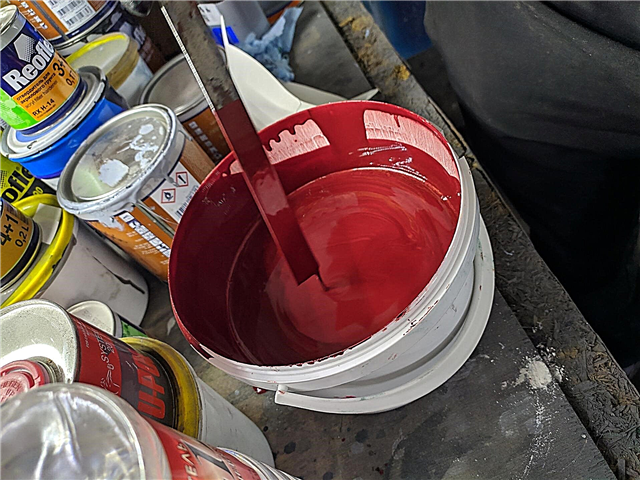
Recommendations for use
Dilution of paints occurs in order to obtain a more liquid composition, or to obtain the desired consistency in old paints and varnishes. This is also done to obtain the best properties from coloring formulations for surface coating.
But the process of mixing the compositions itself requires strict adherence to the proportions indicated by the manufacturers on the packaging. If they are broken, then the coloring matter may lose its quality, and the coating may not be what you wanted to get.
Therefore, it is so important to pay special attention to this process, in addition, some characteristics inherent in solvent 647 require safety measures to be taken when working with it, without which human health could be in jeopardy. Details on these measures will be discussed in the next chapter.

What is the difference between solvent 646 and 647
To choose the best solvent option for certain purposes, you need to compare with a competing option. Since the most popular thinners are 646 and 647, it is precisely their comparison that will be given.
What is the difference between solvents 646 and 647, first of all, is the constituent components, which determine the possibility of using them for certain surfaces. In 646, acetone and ethyl cellulosolve, absent in 647, are included in the composition.
These components do not allow the use of solvent 646 on surfaces that do not accept coarse chemical attack. Its composition is more aggressive, and its use requires great care so that the paint and varnish material is not spoiled. But both formulations include toluene and butanol. So the difference between solvent 646 and 647 is more aggressive to surfaces, and it requires more caution in work.
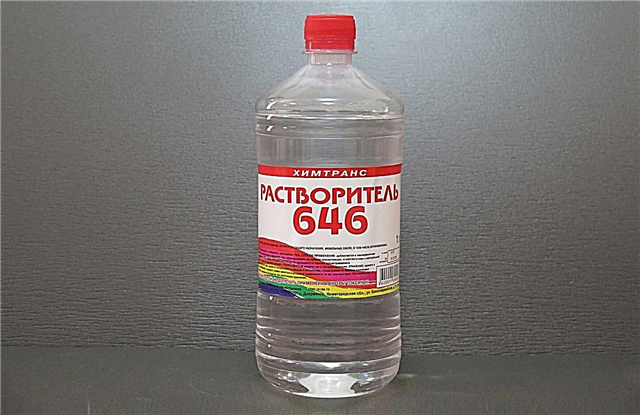
The use of solvents is necessary, especially when it comes to painting work. Due to the fact that solvent compositions have hazardous characteristics, it is necessary to work with them in compliance with safety measures. Solvent 647 is softer compared to many other types on the market, so its use is suitable for various fields of activity. It is important to buy it in trusted places so as not to stumble on a fake, the use of which can be even more dangerous.
Safety and Precautions
The solvent is an unsafe substance and can have a negative effect on the human body. When working with it, it is important to observe caution and safety.
- The composition should be stored in a tightly closed, completely sealed container away from fire and heating equipment. It is also necessary to avoid exposure to the tank with a thinner direct sunlight.
- Solvent composition, like other household chemicals, must be securely hidden and inaccessible to children or animals.
- Inhalation of concentrated vapors of the solvent composition is very dangerous and can cause poisoning. In the room where paint work or surface treatment is carried out, forced ventilation or intensive ventilation should be provided.

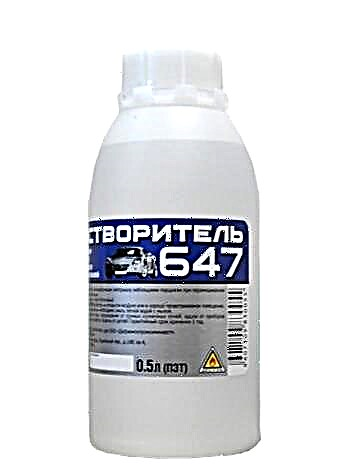
- Avoid contact with solvent in eyes or on exposed skin. Work must be carried out with protective rubber gloves. If the thinner does get into exposed areas of the body, immediately wash the skin with plenty of water using soap or slightly alkaline solutions.
- Inhalation of vapors of high concentration may damage the nervous system, hematopoiesis, liver, gastrointestinal tract, kidneys, mucous membranes. The substance is able to enter the organs and systems not only by direct inhalation of the vapor, but also through the pores of the skin.
- In case of prolonged contact with the skin and the lack of timely washing, the solvent can damage the epidermis and cause reactive dermatitis.

- The composition of R-647 forms explosive flammable peroxides if it is mixed with oxidizing agents. Therefore, the solvent must not be allowed to come into contact with nitric or acetic acid, hydrogen peroxide, or strong chemical and acidic compounds.
- Contact of the solution with chloroform and bromoform is fire and explosive.
- Spraying of the solvent should be avoided, since in this case a dangerous degree of air pollution is reached very quickly. When spraying the composition, ignition of the solution is possible even at a distance from the fire.


You can purchase R-647 solvent in building materials stores or in specialized markets. For domestic use, the solvent is packaged in plastic bottles from 0.5 liters. For use on an industrial scale, the packaging is made in cans with a volume of 1 to 10 liters or in large steel barrels.
The price of the solvent brand R-647 on average is about 60 rubles. for 1 liter
For a comparison of solvents 646 and 647, see the next video.

